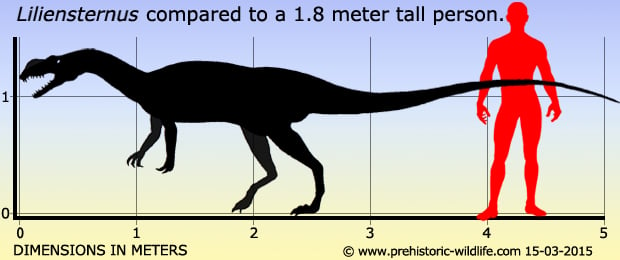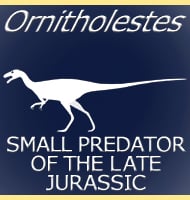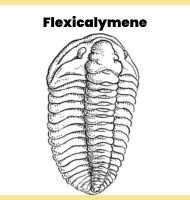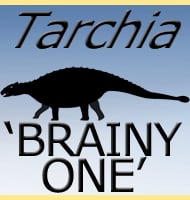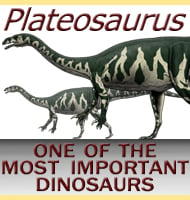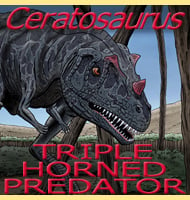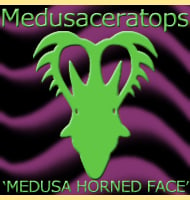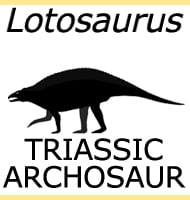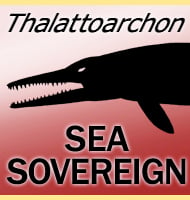In Depth
The Liliensternus holotype was originally described in 1934 as a species of Halticosaurus by Friedrich von Huene. However a later palaeontologist named Samuel Paul Welles concluded that this species was actually different beyond the species level and created the genus of Liliensternus for it instead. Further complication to the history of the genus comes from the creation of another new species from France. Named Liliensternus airelensis, this species has since been renamed as the genus Lophostropheus.
At over five meters long Liliensternus was a large theropod dinosaur for the late Triassic. With its size it’s very probable that Liliensternus hunted sauropodomorph dinosaurs (the ancestors of the massive sauropods) like Plateosaurus, although smaller theropod dinosaurs might have also been taken. Liliensternus is usually depicted with a crested snout similar to that of the later Dilophosaurus of the Jurassic.
Further Reading
– Dilophosaurus wetherilli (Dinosauria, Theropoda): osteology and comparisons. – Palaeontographica Abteilung A 185:85-180. – S. P. Welles – 1984. – The coelophysoid Lophostropheus airelensis, gen. nov.: a review of the systematics of “Liliensternus” airelensis from the Triassic-Jurassic boundary outcrops of Normandy (France). – Journal of Vertebrate Paleontology, 27(1): 73-86. – Martin D. Ezcurra & Gilles Cuny – 2007.
